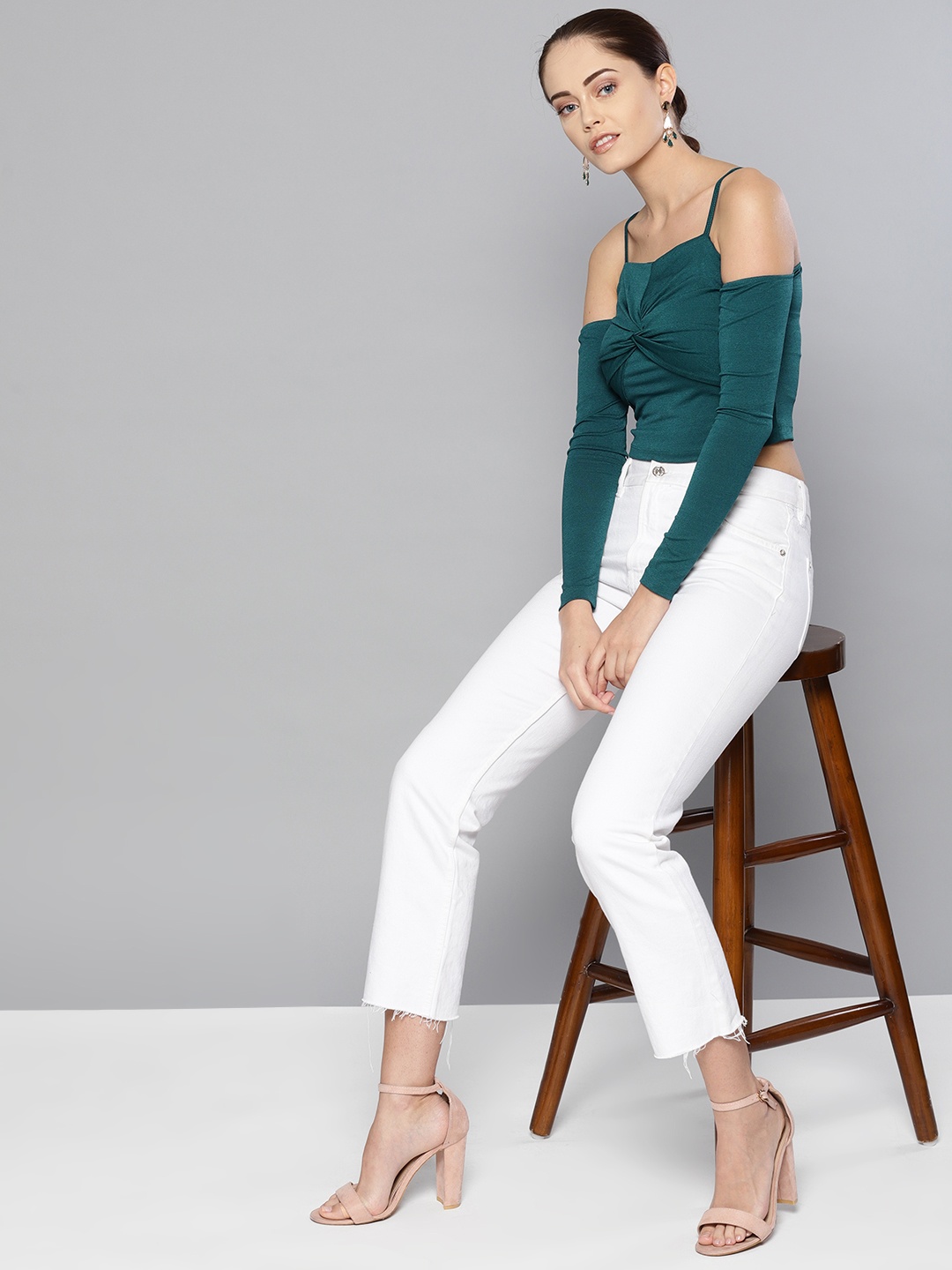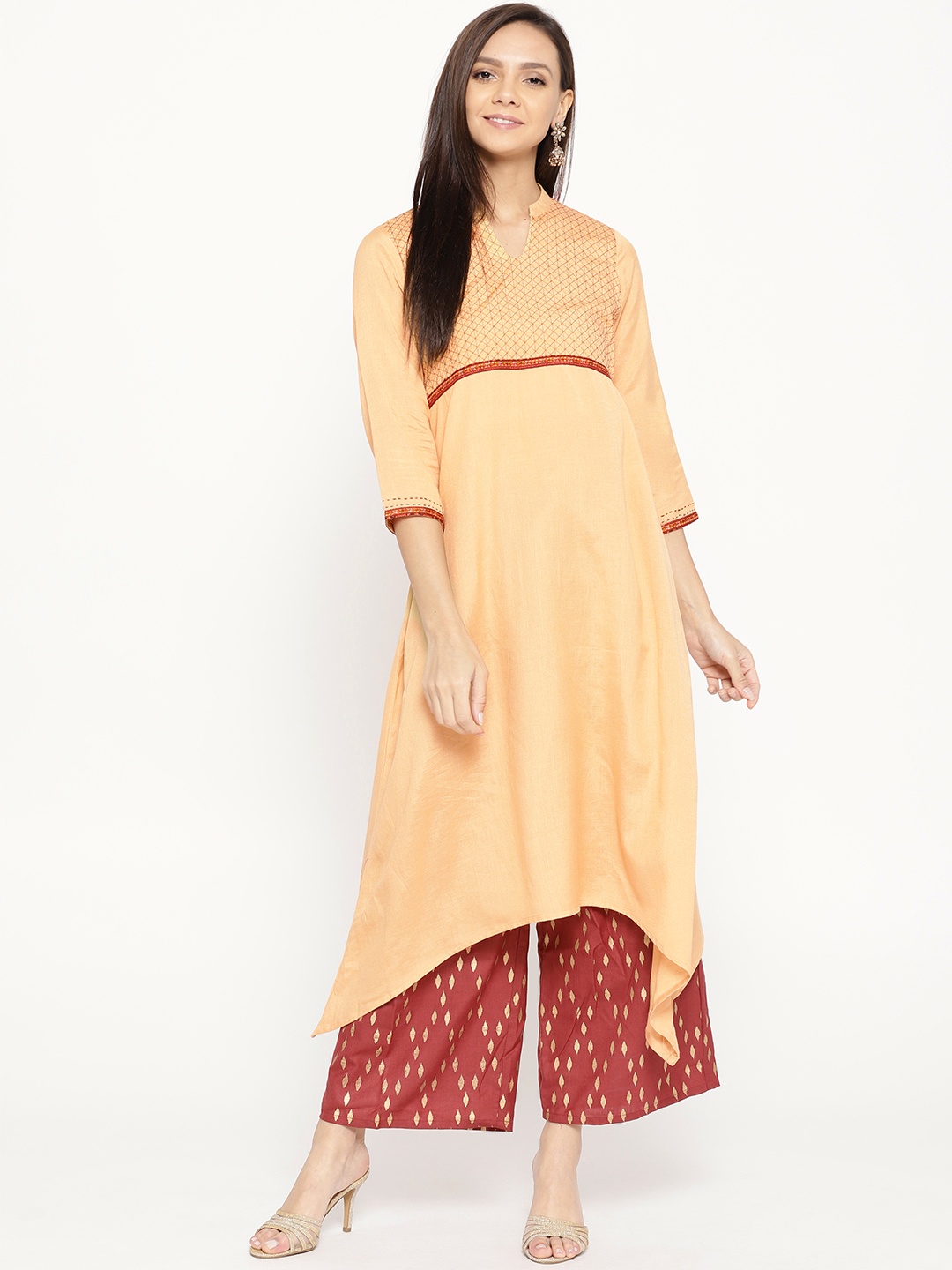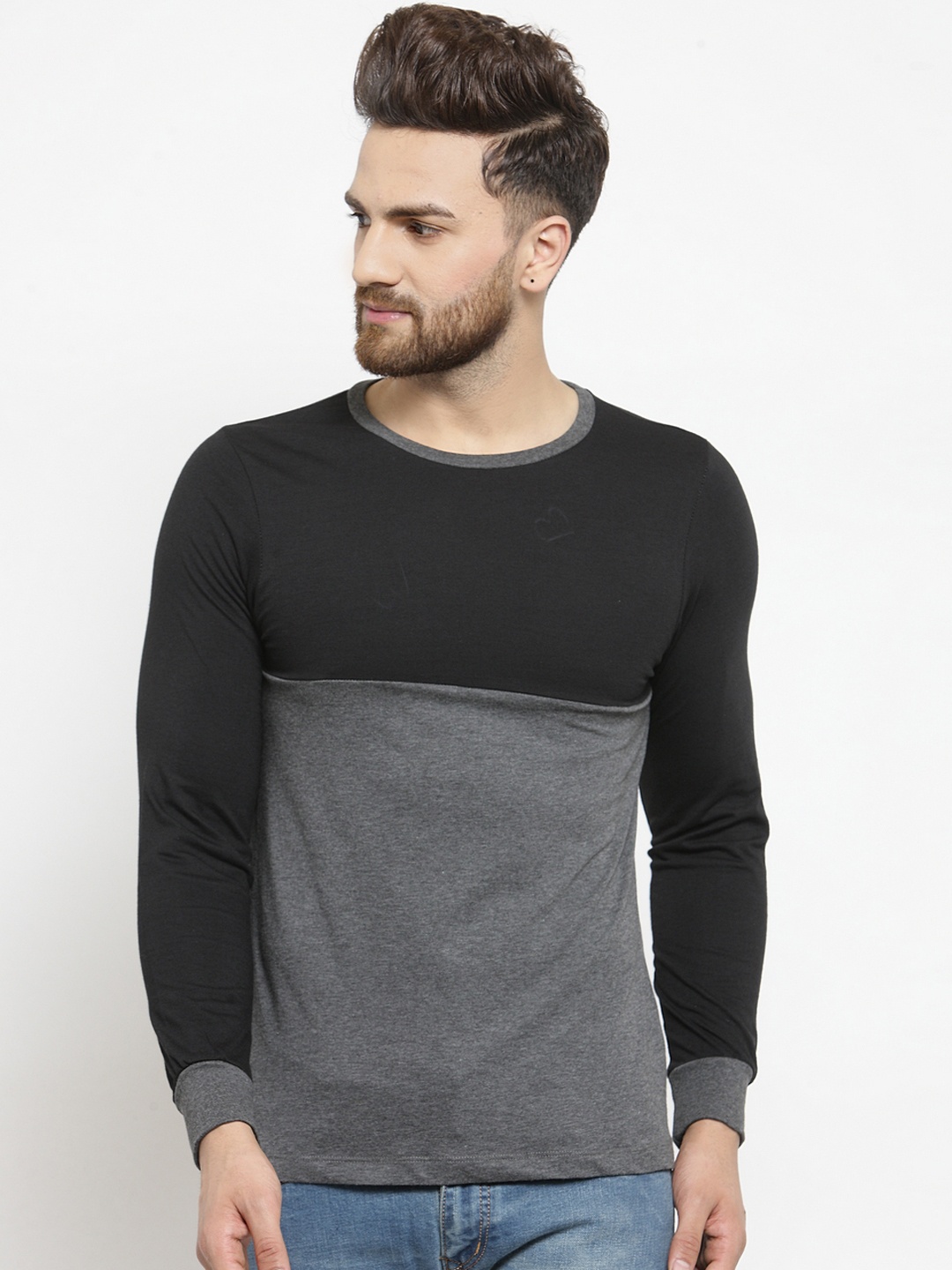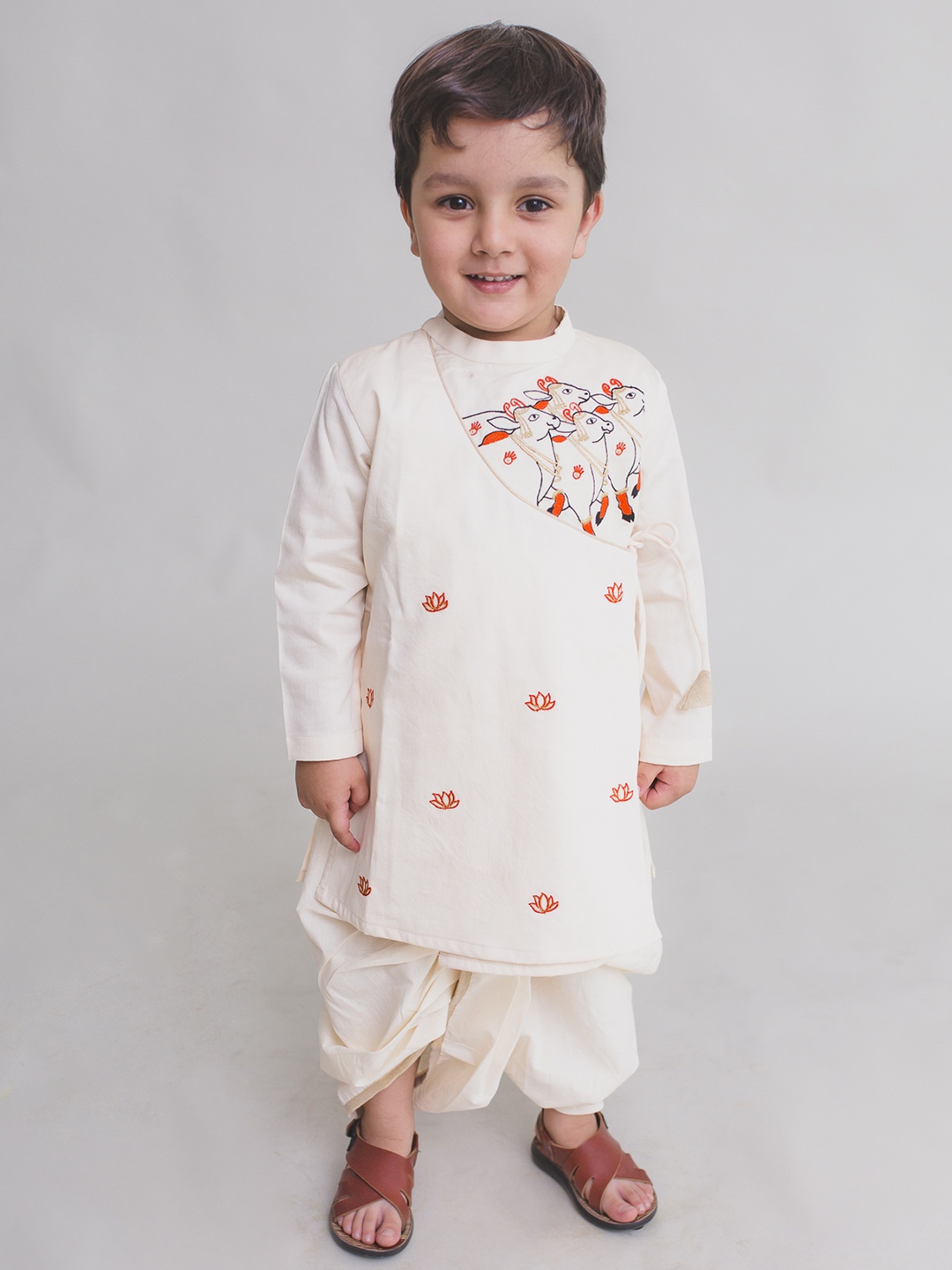Why Fabrics Matter More Than Prints For Shirts, Kurtas and Tops: Explore Best Options
Prints may turn heads, but fabrics decide whether a shirt, kurta or top stays your wardrobe hero or ends up forgotten in the back of the cupboard. This is why fabrics outshine prints every single time, and the five best ones worth investing in.

Get good quality of fabric for kurta, shirts and more
Walk into any clothing store and you'll notice the first thing that grabs attention isn't the weave or texture, but the print. Stripes, florals, geometrics, checks, rows of patterns call out like colourful fireworks. Yet, after the initial attraction fades, the truth emerges: prints may delight the eyes, but fabrics embrace the skin.
Think of it this way. That dazzling kurta in a bold paisley design might look glorious under the shop lights, but if it's made of scratchy polyester, chances are it will sit untouched after a single uncomfortable outing. Meanwhile, a plain cotton shirt, soft and breathable, becomes the piece worn repeatedly, season after season. In the long run, fabric beats print hands down.
Here's a closer look at why fabrics matter more and five options that never fail when it comes to shirts, kurtas and tops.

Get good quality of fabric for kurta, shirts and more; Photo Credit: Pexels
1. Comfort Is King: Cotton
Cotton has been the crown jewel of wardrobes for centuries, and for good reason. When temperatures soar and humidity feels like an invisible blanket, cotton is the saviour. It absorbs sweat, allows air to flow, and feels light on the skin. Unlike synthetic blends that trap heat, cotton lets the body breathe, making it perfect for everyday shirts, casual kurtas, and tops worn from morning errands to evening gatherings.
What makes cotton special isn't just its comfort but its versatility. A crisp white cotton shirt pairs with formal trousers for the office, while a hand-block printed cotton kurta works beautifully for festive pujas or casual lunches. The range is endless, slub cotton for a textured feel, voile for sheer elegance, cambric for lightweight tops, or poplin for sturdy shirts.
And let's not forget the emotional comfort cotton brings. There's a nostalgic sense of familiarity in wearing a soft cotton kurta that reminds one of childhood summers, mango stains, and terrace evenings. Prints may come and go, but cotton's embrace stays timeless.
2. Grace in Every Drape: Linen
If cotton is about softness, linen is about elegance. Linen has a way of announcing sophistication without trying too hard. The natural wrinkles, once considered imperfections, are now worn as a badge of authenticity. A linen shirt, whether plain or striped, instantly elevates a look from casual to chic.
What makes linen stand apart is its drape. Unlike stiff synthetics, linen flows with the body, giving kurtas and tops an airy grace. It's the perfect pick for long summer afternoons, when the skin longs for fabric that feels cool and refreshing. Pair a pastel linen kurta with silver jhumkas and kolhapuris, and the result is understated magic.
Yes, linen tends to crease easily, but that's part of its charm. It signals ease, comfort, and a certain relaxed lifestyle. Investing in linen means paying a little more, ₹1,500 and upwards for good-quality shirts, but the durability makes every rupee worth it. Linen pieces often outlive trend-driven prints, quietly becoming wardrobe classics.
Also Read: Top 5 Kurta Palazzo Sets Under ₹1500 for Stylish Ethnic Wear
3. Everyday Luxury: Khadi
Khadi isn't just fabric; it's a story woven into threads. Every strand carries the rhythm of hand-spun looms, a connection to heritage and simplicity. What makes khadi remarkable is its adaptability; it's cool in summer and warm in winter, thanks to its unique weave.
For shirts, khadi offers a textured charm that machine-made fabrics can't replicate. A khadi kurta, even without prints, carries gravitas, perfect for festive gatherings or cultural events. Pair it with churidars, denims, or even palazzos, and it holds its ground beautifully. Tops in khadi often come with minimal embroidery or subtle detailing, letting the fabric itself do the talking.
Khadi also has a tactile appeal that stays memorable. Wearing it feels like wrapping yourself in something alive, earthy, and rooted. Prints on khadi certainly exist, but even the plainest khadi shirt stands tall, proving that fabric can carry style without relying on loud designs. In a world chasing fast fashion, khadi's slow rhythm is a gentle reminder of the value of longevity.
4. Shine Without Effort: Silk Blends
Silk is often reserved for grand weddings and festive occasions, but its blends are surprisingly practical for shirts, kurtas and tops meant for regular wear. Silk-cotton or silk-viscose fabrics offer a subtle sheen that adds instant glamour without the heaviness of pure silk.
What makes silk blends appealing is their ability to transition between day and night. A simple silk-cotton kurta works for office meetings when paired with minimal jewellery, then transforms into festive attire with a dupatta and statement earrings. Tops made of silk blends carry a natural elegance, needing little else to shine.
Yes, silk requires care, but blends are more forgiving and affordable. Prices vary widely, from ₹1,200 for simple kurtas to ₹5,000 for designer tops, but the payoff is in how often you reach for them. A floral print on polyester may fade, but the glow of silk blend fabric keeps its charm season after season. It's luxury made accessible, without demanding a special occasion every time.
5. All-Weather Hero: Rayon
Rayon may sound modern, but it's been around for over a century, and for good reason. Derived from cellulose, it combines the comfort of natural fibres with the versatility of synthetics. For shirts, kurtas and tops, rayon offers a silky finish that feels smooth on the skin, drapes beautifully, and works across seasons.
What's particularly wonderful about rayon is its adaptability. It mimics silk's shine, cotton's softness, and linen's drape, yet remains affordable. A rayon kurta priced around ₹800 can look as elegant as one twice the cost, making it a popular choice for daily wear. The fabric doesn't wrinkle as much as linen or khadi, which means it's travel-friendly and low-maintenance.
Rayon tops pair effortlessly with jeans, skirts or even layered under jackets. Kurtas in rayon work equally well for office wear and evening get-togethers. While prints are often used on rayon, even a plain solid-coloured piece looks stylish thanks to the fabric's natural fall. It's the kind of hero fabric that rarely lets anyone down, balancing comfort, cost, and charm with ease.

Get good quality of fabric for kurta, shirts and more; Photo Credit: Pexels
6. Breezy Elegance: Chanderi
Chanderi fabric, with its sheer texture and subtle sheen, has an elegance that feels both festive and everyday-friendly. Traditionally woven with cotton and silk, Chanderi is light, breathable, and surprisingly strong. Shirts made from Chanderi might be rare, but kurtas and tops in this fabric are much loved.
What makes Chanderi remarkable is its ability to feel dressy without being overwhelming. A plain Chanderi kurta in pastel tones with minimal zari border is perfect for office celebrations or temple visits. Pair it with simple leggings and juttis, and it becomes an outfit that feels special without shouting for attention.
Yes, Chanderi requires gentle handling, but its grace is undeniable. Unlike bold printed fabrics that may feel dated after a season, Chanderi pieces stay timeless. A well-kept Chanderi top or kurta can last for years, often becoming a favourite for occasions when understated beauty is the goal. Investing in one means adding a touch of heritage glamour to your wardrobe.
7. The Everyday Warrior: Poplin
Poplin may sound plain, but don't underestimate it. This tightly woven cotton fabric has been the backbone of crisp shirts and neat kurtas for generations. What makes poplin stand out is its durability. It resists wear and tear better than most lightweight cottons, which makes it ideal for everyday office wear or college wardrobes.
A poplin shirt carries a certain sharpness that polyester never manages. It holds its structure, stays cool in the heat, and works effortlessly with formal trousers or jeans. Kurtas in poplin often lean towards minimalism, relying on neat cuts and solid colours instead of busy prints. The result? Outfits that look smart without trying too hard.
For tops, poplin offers versatility, it can be tailored into peplum designs, tunics, or even boxy oversized fits. Prices start as low as ₹600 for basic shirts, making it accessible for daily wear. While prints may fade with repeated washes, poplin's sturdiness ensures that even a plain piece continues to serve for years.
8. Soft Like a Hug: Mulmul
Mulmul, often called muslin, is like the whisper of fabrics, soft, airy, and almost weightless. For hot and humid days, nothing feels kinder against the skin. Traditionally woven as fine cotton, mulmul kurtas are known for their cloud-like comfort.
What sets mulmul apart is its semi-sheer quality. A white mulmul kurta, paired with colourful dupattas or chunky bangles, has a charm that's delicate yet grounded. Tops in mulmul, especially those with gathers or layers, fall beautifully without weighing down the frame. Shirts in mulmul may be less common, but when made, they have an effortless casual chic.
Mulmul requires gentle handling, yes, but its comfort makes up for it. Prints on mulmul are usually block-printed or embroidered, but even without them, the fabric sings. Prices vary from ₹700 for everyday wear to ₹3,000 for designer pieces. While prints fade with seasons, mulmul's softness is a memory the skin never forgets.
9. The Stylish Underdog: Modal
Modal is one of those fabrics that quietly wins hearts. Made from beech tree fibres, it has a silky-smooth texture, almost like rayon, but with better breathability. For shirts, kurtas and tops, modal offers a flattering drape that clings just enough without feeling tight.
One of modal's biggest advantages is its colour retention. Unlike some fabrics where prints fade after a few washes, modal holds dyes beautifully. But even in plain shades, modal looks luxurious. A modal kurta with minimal embroidery, or a flowy modal top, feels like something twice its price.
It's also easy on maintenance, less wrinkling, machine washable, and long-lasting. Prices generally start at around ₹1,000, making it a great balance between affordability and luxury. Modal proves that a fabric's texture and durability matter far more than the pattern it carries. In fact, many find themselves re-wearing plain modal outfits more often than flashy printed ones.
10. Blends That Work Harder Than Prints
Finally, blends deserve a mention. Cotton-linen, cotton-silk, or even rayon-poly blends, all bring the best of multiple worlds. For those who want comfort with durability, or sheen with breathability, blends offer balance.
A cotton-linen shirt keeps its crispness while staying cool in summer. A cotton-silk kurta carries elegance without being high-maintenance. Even cotton-poly blends, when chosen well, can last longer and handle rough use better than delicate prints on fragile fabrics.
Blends are also wallet-friendly. Starting as low as ₹500, they make everyday wear stylish without demanding constant care. The fabric mix often dictates how long a piece stays relevant in your wardrobe, while prints may lose appeal after just one season. It's these blends that make everyday dressing practical and versatile, proving once again that fabrics trump patterns every time.
Products Related To This Article
1. KAYRAAH Women Embroidered Pure Cotton Anarkali Kurta
2. Jai Textiles Men Slim Fit Checkered Mandarin Collar Casual Shirt
3. INDICRAFT Women Printed Rayon Straight Kurta
4. VYMO Women Fit and Flare Pink Midi/Calf Length Dress
5. Rollingood Men Solid Cowl Neck Modal Brown T-Shirt
Clothes are more than colours and prints. They're the second skin worn through seasons, celebrations, and everyday hustle. While a vibrant floral or quirky geometric might spark initial joy, it's the fabric that decides how often a piece is reached for, how long it lasts, and how comfortable it feels.
From the softness of cotton to the understated glamour of silk blends, from the timelessness of khadi to the breezy charm of mulmul, fabrics set the stage for style that's wearable, durable, and memorable. Prints may start conversations, but fabrics build relationships. And in the end, it's those relationships, comfortable, graceful, and long-lasting, that make clothes truly worth wearing. Shop these ethnic attires for men and women online.
Disclaimer: The images used in this article are for illustration purposes only. They may not be an exact representation of the products, categories, and brands listed in this article.

























